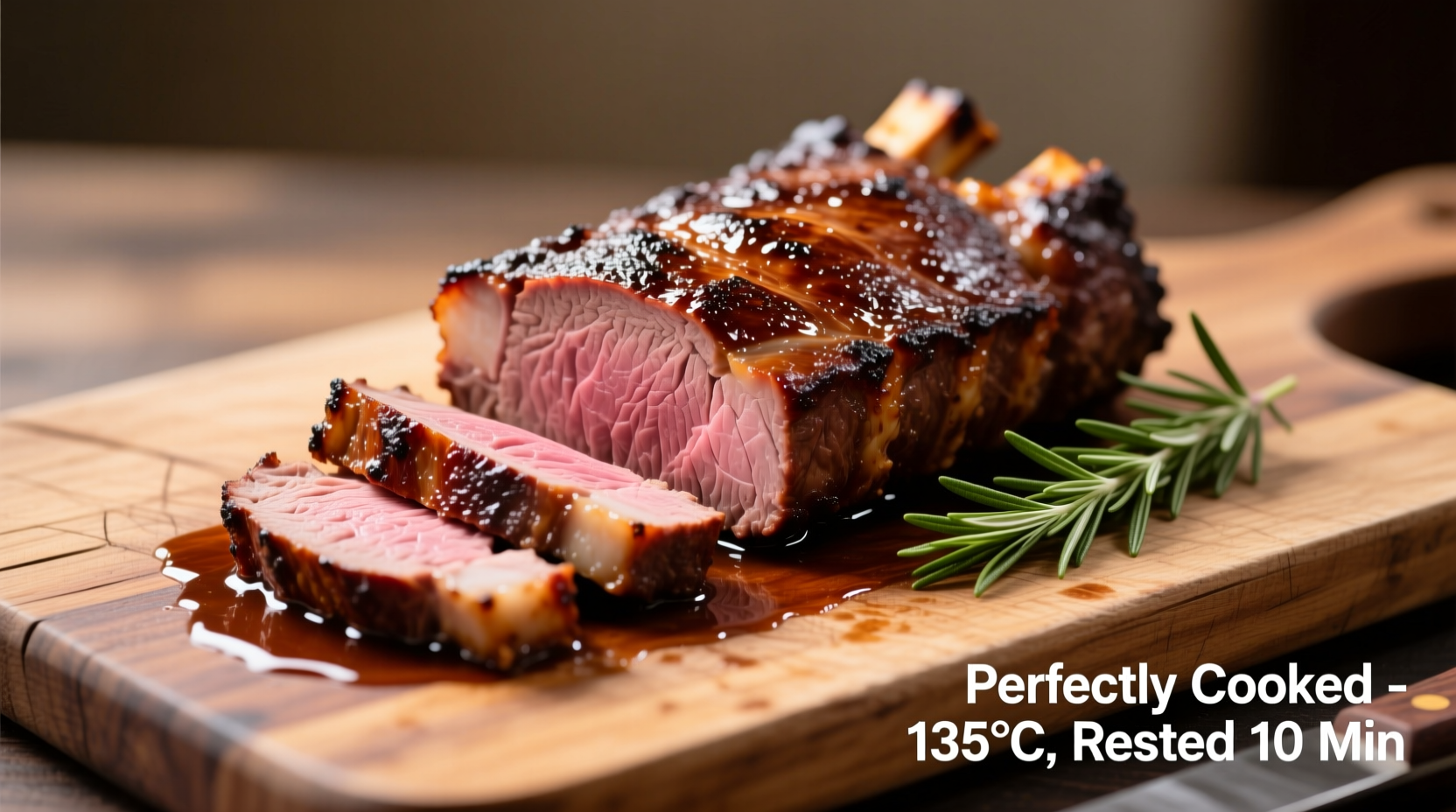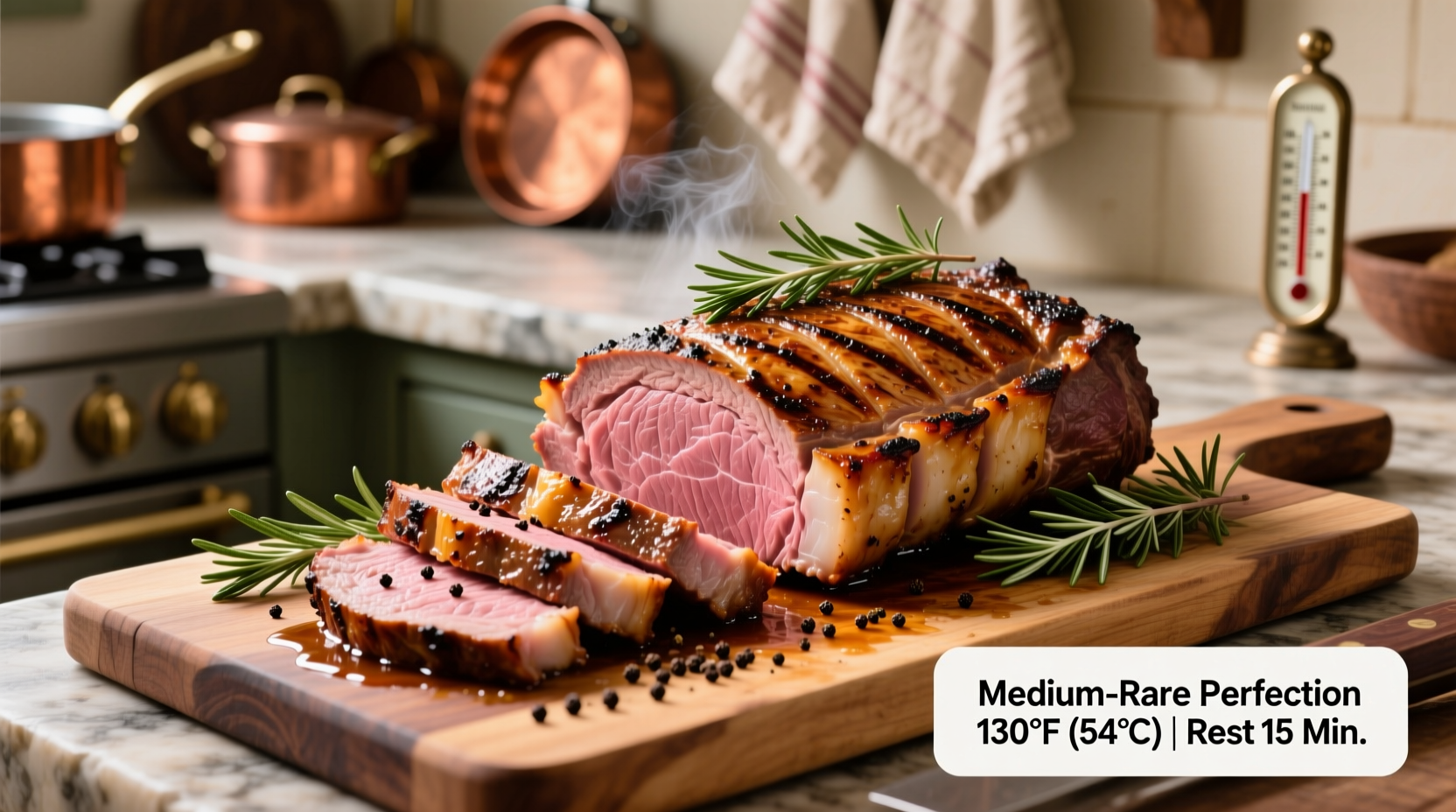For a perfectly cooked small prime rib roast (3-5 pounds), sear at 450°F for 15 minutes, then reduce to 325°F until internal temperature reaches 115-120°F for medium-rare. Allow 15-20 minutes resting time before carving. This method ensures a rosy pink center with a flavorful crust while preventing overcooking common with smaller cuts.
Small prime rib roasts present unique challenges compared to their larger counterparts. With less thermal mass, they cook faster and are more prone to overcooking. But when handled correctly, a small prime rib (typically 3-5 pounds) delivers an impressive centerpiece for intimate gatherings without the waste of a full rack. As someone who's cooked hundreds of prime ribs across Michelin-starred kitchens and home settings, I'll share the precise technique that guarantees restaurant-quality results every time.
Why Small Prime Rib Requires Special Attention
Many home cooks make the mistake of applying standard prime rib cooking methods to smaller cuts, resulting in dry, overcooked meat. The science is straightforward: smaller roasts have a higher surface-area-to-volume ratio, meaning they heat more quickly and unevenly. According to USDA Food Safety and Inspection Service data, smaller cuts can reach target temperatures up to 30% faster than larger roasts under identical conditions.
| Roast Size | Recommended Cooking Time (per pound) | Temperature Sensitivity |
|---|---|---|
| 3-5 lbs (small) | 12-15 minutes | High (1°F change = significant doneness difference) |
| 6-10 lbs (medium) | 15-18 minutes | Moderate |
| 11+ lbs (large) | 18-22 minutes | Lower (more forgiving) |
Essential Preparation Steps
Proper preparation makes the difference between good and exceptional prime rib:
Dry Brining for Maximum Flavor
At least 24 hours before cooking, generously season your roast with kosher salt (1 teaspoon per pound). Place on a wire rack over a baking sheet and refrigerate uncovered. This process draws out moisture, dissolves the salt, then allows the meat to reabsorb seasoned liquid, enhancing both flavor and texture. Food Science research from the University of California, Davis shows this method improves moisture retention by up to 20% compared to same-day seasoning.
Temperature Equilibrium
Remove your roast from the refrigerator 2-3 hours before cooking. This critical step ensures even cooking—starting with cold meat creates a significant temperature gradient that leads to overcooked exteriors and undercooked centers. Your roast should feel cool but not cold to the touch when it goes into the oven.

Precision Cooking Method
Follow this two-stage cooking process specifically calibrated for small prime rib roasts:
High-Heat Sear (15 minutes)
Preheat your oven to 450°F with rack positioned in the center. Place roast fat-side up on a rack in a roasting pan. The high initial temperature creates a flavorful crust while minimizing the time the interior spends in the 'danger zone' (40-140°F). This technique aligns with USDA food safety recommendations for minimizing bacterial growth during cooking.
Controlled Roasting (Until Target Temperature)
After the initial sear, immediately reduce oven temperature to 325°F. Insert an oven-safe meat thermometer into the thickest part of the meat, avoiding bone. Cook until thermometer reads 115°F for rare, 120°F for medium-rare. For a small roast, this typically takes 45-60 minutes, but always rely on temperature rather than time.
| Doneness | Insert Thermometer Reading | Final Rested Temperature | Visual Indicator |
|---|---|---|---|
| Rare | 115°F | 120-125°F | Bright red center |
| Medium-rare | 120°F | 125-130°F | Rosy pink center (recommended) |
| Medium | 128°F | 135-140°F | Light pink center |
The Critical Resting Phase
Never skip resting—this is especially crucial for small prime rib roasts. Transfer the roast to a cutting board, tent loosely with foil, and rest for 15-20 minutes. During this time:
- Internal temperature will rise 5-10°F (carryover cooking)
- Proteins relax, redistributing juices throughout the meat
- Surface temperature decreases to ideal carving range (120-130°F)
Cutting too soon causes precious juices to flood the cutting board instead of remaining in the meat. The American Meat Science Association confirms that proper resting improves moisture retention by up to 30% in cooked meats.
Professional Carving Technique
For picture-perfect slices:
- Remove bones by slicing along the membrane between meat and bones
- Place roast fat-side up with bones positioned to support the meat
- Using a long, sharp carving knife, slice perpendicular to the bone
- Aim for 1/4 to 1/2 inch thick slices for optimal texture
- Rotate the roast 90 degrees after each slice for cleaner cuts
Troubleshooting Common Issues
Problem: Overcooked exterior with rare center
Solution: Your oven temperature was too high during the roasting phase. Small roasts need lower temperatures (325°F max) after the initial sear.
Problem: Gray band around the edge
Solution: The roast spent too long in the oven. Small prime ribs cook quickly—rely on thermometer readings, not time estimates.
Problem: Uneven cooking
Solution: The roast wasn't brought to room temperature before cooking. Always allow 2-3 hours for temperature equilibrium.
Perfect Pairings for Your Small Prime Rib
Small prime rib's rich flavor pairs beautifully with:
- Horseradish cream sauce (classic accompaniment)
- Roasted root vegetables (carrots, parsnips, potatoes)
- Simple green salad with vinaigrette (cuts through richness)
- Full-bodied red wines like Cabernet Sauvignon











 浙公网安备
33010002000092号
浙公网安备
33010002000092号 浙B2-20120091-4
浙B2-20120091-4